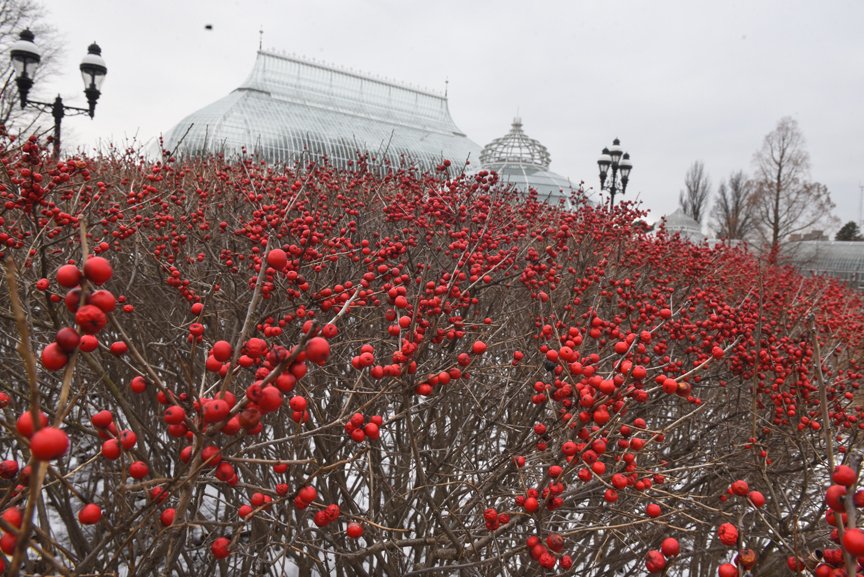By Doug Oster
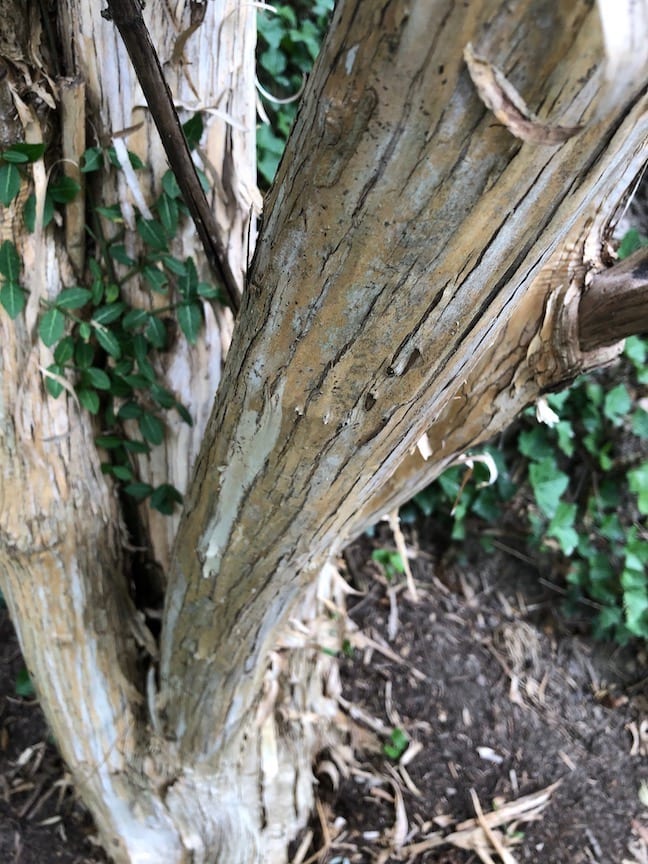
It’s all about the bark
Aside from heptacodium, there is a wide range of plants that have spectacular bark.The Chinese lacebark elm is an unusual and uncommon tree. I first saw one on the campus of Chatham University, which is also an arboretum. Chinese lacebark elm is a fast grower that can eventually reach 50-feet, donning stunning multi-colored bark. It has good resistance to Dutch elm disease and is also resistant to Japanese beetles and elm leaf beetles.There are many other wonderful trees and shrubs at Chatham; it’s one of Pittsburgh’s hidden gardening treasures.The shagbark hickory is a big tree with rich, fall color, that produces nuts as a bonus. Off-season though, the thick, layered bark is a show stopper.I longed for a paperbark maple for years and finally planted one about a decade ago. When I walk by it, I sing a version of the Beatles' song “Paperback Writer,” substituting the name of the tree in the chorus. It’s a slow grower, like many maples, and has cinnamon-colored, flaky bark.Stewartia is another underused tree offering four seasons of interest. It has a beautiful, natural shape, pretty white peony-like flowers in summer, nice fall color. Its flaky bark reveals shades of gray, cream and tan.
Winter shrubs to give landscape color
If you want to see what a mass of winterberry holly looks like, drive past Phipps Conservatory and Botanical Gardens. You'll view a sea of bright red berries. In the wild, this native shrub loves moist, acidic soil, but it is adaptable to a wide range of growing conditions. Winterberry prefers full sun, but the deciduous plant will put on berries in partial sun too. ‘Berry Heavy’ is a great cultivar. ‘Berry Heavy Gold’ produces unique gold-colored berries. ‘Berry Poppins’ only reaches about 4-feet tall and 4-feet wide for gardeners who don’t have room for full-sized cultivars that can grow up to twice that size. All are available from Proven Winners ColorChoice Shrubs and some are sold at local nurseries.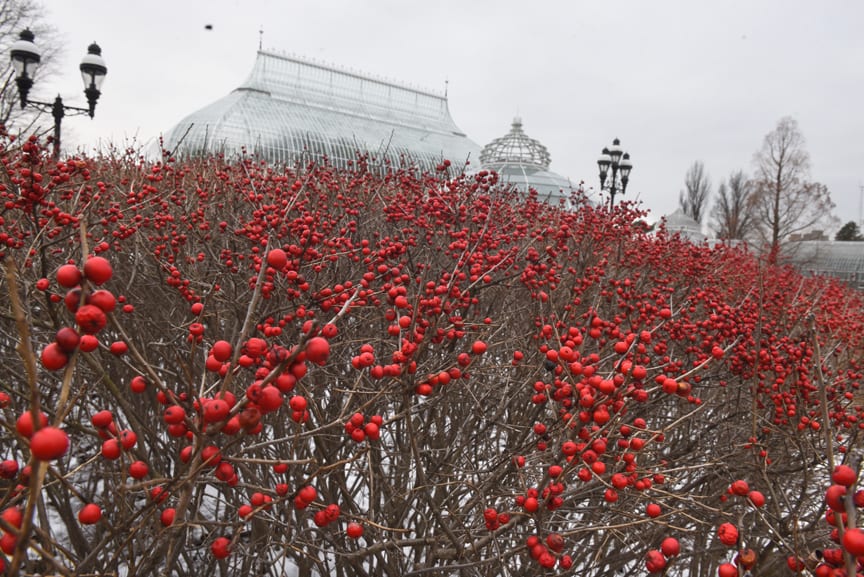 Witch hazel is also a native shrub that flowers in early-to-late winter, depending on the variety and weather. Some cultivars have pretty yellow flowers, while others are red. There is something amazing about seeing a plant in full bloom during the cold.
Witch hazel is also a native shrub that flowers in early-to-late winter, depending on the variety and weather. Some cultivars have pretty yellow flowers, while others are red. There is something amazing about seeing a plant in full bloom during the cold.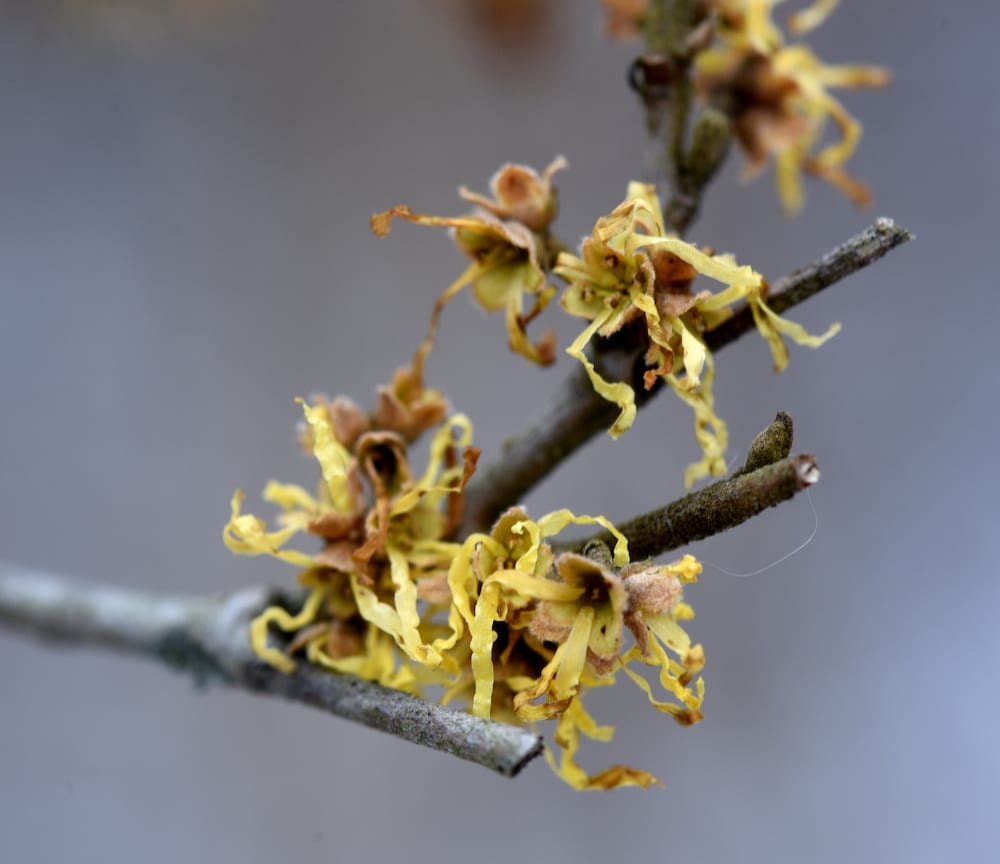 Red twig dogwoods should not be confused with dogwood trees. Red twig dogwoods (Cornus stolonifera) are multi-stemmed shrubs with either bright red or yellow stems that make a perfect presentation against winter white snow. The shrub is easy to grow in partial-to-full sun and has many cultivars to choose from — even some with variegated foliage for spring and summer interest. ‘Arctic Fire’ is a favorite from Proven Winners ColorChoice Shrubs and is available at local nurseries.I love oak leaf hydrangeas. It's another plant with many different seasons of interest. Conical white flowers fade to pink and the big “oak leaves” turn deep red in the fall. When the foliage finally drops, it reveals a deep orange, brown peeling bark that is attractive against the snow.
Red twig dogwoods should not be confused with dogwood trees. Red twig dogwoods (Cornus stolonifera) are multi-stemmed shrubs with either bright red or yellow stems that make a perfect presentation against winter white snow. The shrub is easy to grow in partial-to-full sun and has many cultivars to choose from — even some with variegated foliage for spring and summer interest. ‘Arctic Fire’ is a favorite from Proven Winners ColorChoice Shrubs and is available at local nurseries.I love oak leaf hydrangeas. It's another plant with many different seasons of interest. Conical white flowers fade to pink and the big “oak leaves” turn deep red in the fall. When the foliage finally drops, it reveals a deep orange, brown peeling bark that is attractive against the snow.
Perennials to plant for a winter show
Of all the perennials growing in my landscape, Helleborus niger is the star that begins blooming now and continues through the winter. During a January thaw, the honeybees will visit looking for something to eat. The buds start with a pinkish hue and open to pure white, often fading back to pink. The evergreen foliage is a great plus, too. Choose carefully when planting a hellebore; it loves part shade and resents being moved, often waiting a few years to bloom again.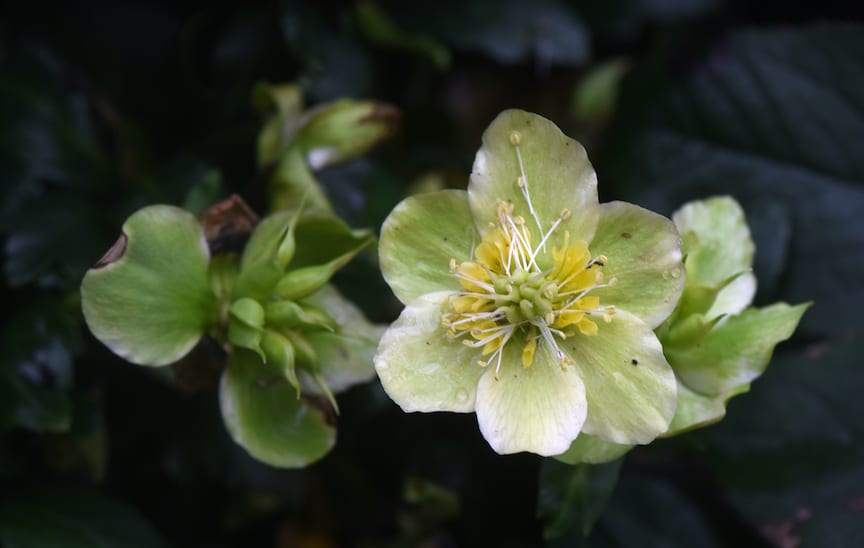 These plants are available right now at nurseries, sold as holiday plants. I’ve been finding them at local nurseries, sold as indoor holiday plants, which should be a crime against horticulture, as this is a long-lived, outdoor plant. The thought of them being thrown to the curbside after New Year’s drives me crazy. I’ll buy them up and try to overwinter them in an unheated greenhouse, but they could be babied along on the windowsill until spring and then planted in the garden.There are countless ornamental grasses that, when left standing in the winter, put on quite a show. Regardless of size or shape, they are perfect deer-resistant additions to the landscape and will grow just about anywhere. Even though they love full sun, they will grow and produce plumes in partial shade, too. ‘Morning Light,’ ‘Karl Foerster’ and ‘Pink Hair Grass’ are just a few fun varieties to plant.If you’re planting season has finished, add these plants to your list of things to grow for next year. For me, I’m not done until the ground freezes solid. Either way, stretching the season with these winter stars will make the garden a special place to be, even in the dead of winter.
These plants are available right now at nurseries, sold as holiday plants. I’ve been finding them at local nurseries, sold as indoor holiday plants, which should be a crime against horticulture, as this is a long-lived, outdoor plant. The thought of them being thrown to the curbside after New Year’s drives me crazy. I’ll buy them up and try to overwinter them in an unheated greenhouse, but they could be babied along on the windowsill until spring and then planted in the garden.There are countless ornamental grasses that, when left standing in the winter, put on quite a show. Regardless of size or shape, they are perfect deer-resistant additions to the landscape and will grow just about anywhere. Even though they love full sun, they will grow and produce plumes in partial shade, too. ‘Morning Light,’ ‘Karl Foerster’ and ‘Pink Hair Grass’ are just a few fun varieties to plant.If you’re planting season has finished, add these plants to your list of things to grow for next year. For me, I’m not done until the ground freezes solid. Either way, stretching the season with these winter stars will make the garden a special place to be, even in the dead of winter.


